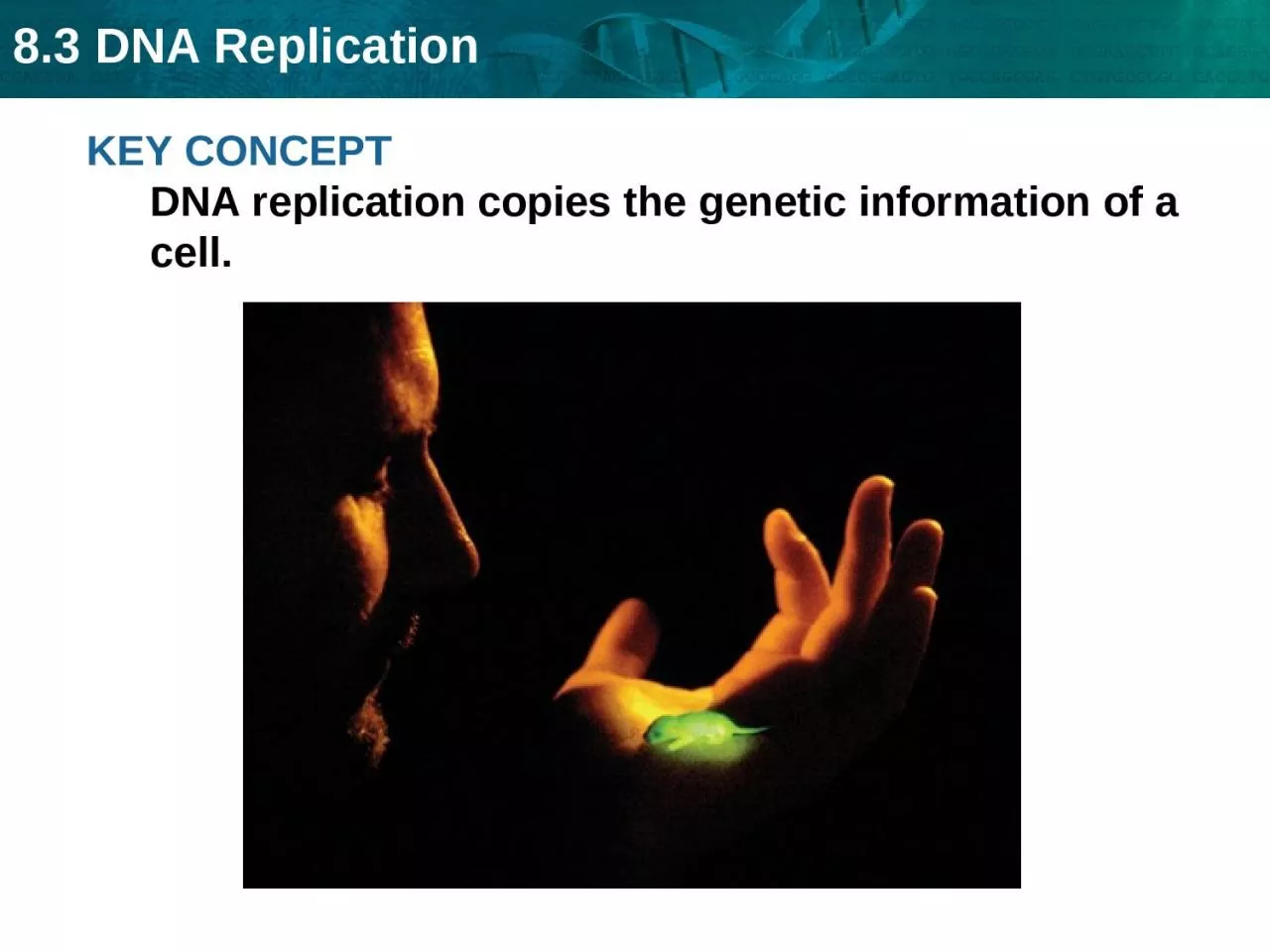

Warm up What makes the new DNA strand complementary to the original strand Vocabulary tip Compl e ment either of two parts that completes a ID: 1042786
Download Presentation The PPT/PDF document "KEY CONCEPT DNA replication copies the ..." is the property of its rightful owner. Permission is granted to download and print the materials on this web site for personal, non-commercial use only, and to display it on your personal computer provided you do not modify the materials and that you retain all copyright notices contained in the materials. By downloading content from our website, you accept the terms of this agreement.
1. KEY CONCEPT DNA replication copies the genetic information of a cell.
2. Warm up!What makes the new DNA strand complementary to the original strand?
3. Vocabulary tipComplement: either of two parts that completes a whole.Compliment: expresión of praise.
4. Replication copies the genetic information. A single strand of DNA serves as a template for a new strand.The rules of base pairing directreplication.DNA is replicated during theS (synthesis) stage of thecell cycle.Each body cell gets acomplete set ofidentical DNA.
5. Helicase: unzip the DNA and separate the nucleotides of the two strandsDNA polymerase: (meaning on the book)Ligase: bond together the nucleotides after the replicationEnzymes
6. Proteins carry out the process of replication. DNA serves only as a template. Enzymes and other proteins do the actual work of replication.Helicase unwind and unzip the double helix.
7. Unwind
8. Unzip
9. DNA unwinding and unzipping process
10. Free-floating nucleotides form hydrogen bonds with the template strand.nucleotideThe DNA molecule unzips in both directions.Proteins carry out the process of replication.
11. Polymerase enzymes (ligase) form covalent bonds between nucleotides in the new strand.DNA polymerase enzymes bond the nucleotides together to form the double helix.DNA polymerasenew strandnucleotide
12. Leading and lagging strandsLeading strand: it is going to replicate continouslyLagging strand: it is going to replicate by patches. DNA structure and Replication: Crash Course Biology #10https://www.youtube.com/watch?v=8kK2zwjRV0M
13. DNA replication is semiconservative. original strandnew strandTwo molecules of DNATwo new molecules of DNA are formed, each with an original strand and a newly formed strand.
14. There are many origins of replication in eukaryotic chromosomes.DNA replication starts at many points in eukaryotic chromosomes.Replication is fast and accurate. DNA polymerases can find and correct errors.
15. Practices (Optional) For the sake of knowledge. Create a concept map with the following words, remember to use linking words.DNA polymerase, helicase, ligase, nucleotides, correct errors, bond nucleotides, purines, pyrimidines, template strand, new strand, semiconservative, A, G, T, C, Watson and Crick, Rosalind Franklin, double helix, hydrogen bonds, covalent bonds, replication, Chargaff rules, replication bubble. Answer the following question:Mention 3 consequences of an incorrect DNA replication. Discuss with a partner the formative assessment questions of page 224.Quiz yourself on Kahoot. Search for a kahoot quiz and take it.
16. CRISPR/Cas9What is your opinion on being able to edit human DNA?Are there any moral implications?What are the benefits and consequences to using CRISPR-Cas9?How does editing our DNA relate to Darwin's theory of evolution, or from a creationist's perspective, intelligent design?If we could edit out mutations, what would the world look like with a seemingly perfect human race?
17. What are the benefits and consequences to using CRISPR?How does editing our DNA relate to Darwin's theory of evolution, or from a creationist's perspective, intelligent design?If we could edit out mutations, what would the world look like with a seemingly perfect human race?
18.